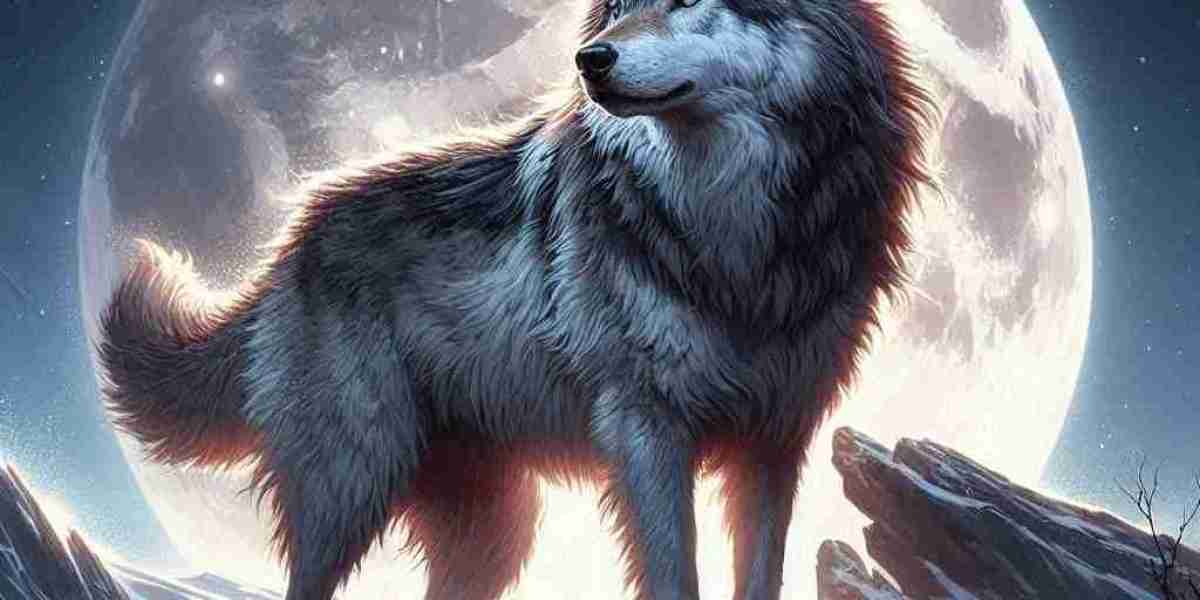Wolves are among the most captivating creatures in the natural world, revered for their strength, intelligence, and complex social structures. As apex predators, wolves play a vital role in the ecosystems they inhabit, shaping the landscapes and influencing the behavior of other animals. Despite their cultural symbolism of power and wilderness, wolves are often misunderstood and face significant challenges in today's world. This blog dives into the mesmerizing lives of wolves, exploring their behavior, their role in the environment, and the ongoing efforts to protect these magnificent animals.
1. Wolves in the Wild: Masters of Adaptation
Wolves (scientific name: Canis lupus) are found across a wide range of environments, from the icy tundras of Alaska to the dense forests of Europe and the arid deserts of the Middle East. This incredible adaptability is key to their survival. Wolves are capable hunters, thriving in both harsh, snowy climates and warm, temperate zones. They primarily prey on large ungulates like deer, elk, and moose, but their diet can vary depending on what's available, which showcases their ability to adjust to changing environments.
Physically, wolves are built for endurance. They have strong limbs and large paws, which allow them to cover vast distances in search of food—up to 30 miles a day. Their thick coats, especially in northern climates, protect them from the cold, and their keen senses of smell and hearing help them locate prey and communicate with their pack.
2. The Pack: A Wolf’s Social World
One of the most intriguing aspects of wolves is their complex social structure. Wolves live in family units called packs, typically consisting of 5-10 members, but packs can grow much larger depending on the availability of food and space. At the center of the pack is the alpha pair—the dominant male and female—who are responsible for leading the group and reproducing. The entire pack helps raise the alpha pair’s pups, with older siblings often playing a significant role in the pups' care and education.
Communication within a pack is a blend of vocalizations, body language, and scent marking. Wolves are famously known for their howls, which serve multiple purposes. A wolf howl can signal territory claims, warn off intruders, or simply strengthen the bond between pack members. Each wolf’s howl is unique, allowing individuals to recognize each other even at great distances.
The social bonds within a wolf pack are vital for survival. By working together, wolves can take down prey much larger than themselves and ensure the pack’s survival through cooperative hunting and sharing of resources.
3. Wolves as Ecosystem Engineers
Wolves are often referred to as “keystone species,” meaning their presence significantly impacts the structure of the ecosystem. Their role as top predators keeps prey populations in check, which prevents overgrazing and maintains the health of plant and animal communities.
One of the most famous examples of wolves' impact on ecosystems comes from Yellowstone National Park. In the 1990s, after decades of absence, wolves were reintroduced to the park. Their return set off a chain of ecological changes, including controlling the elk population, which in turn allowed overgrazed plants like aspen and willow to recover. This led to increased biodiversity, benefiting species like beavers, birds, and even fish. The reintroduction of wolves in Yellowstone is a powerful demonstration of how predators influence the balance of nature.
4. The Threats Facing Wolves
Despite their ecological importance and cultural significance, wolves face numerous threats. Historically, wolves were hunted and persecuted across much of their range, particularly in Europe and North America, where they were seen as dangerous predators and competition for livestock. By the early 20th century, wolves were nearly wiped out in many parts of the world.
Today, wolves are making a comeback in some regions, but they are still at risk. Habitat loss due to urbanization and deforestation is a major problem, as wolves need large, undisturbed areas to hunt and thrive. Human-wildlife conflict, particularly with farmers and ranchers, also poses a significant threat. Many wolves are killed each year due to concerns over livestock predation, even though wolves typically prefer wild prey.
Efforts to protect wolves through legislation, conservation programs, and public education are ongoing, but the battle is far from over. In some places, wolves are still hunted or trapped, and debates over their protection remain highly polarized.
5. Coexistence: Humans and Wolves
Living alongside wolves can be challenging, especially for those who rely on livestock for their livelihoods. However, solutions do exist that can help reduce conflict and promote coexistence. Non-lethal deterrents, such as fencing, guard animals, and the use of noise or light devices, have proven effective in minimizing wolf attacks on livestock. Additionally, compensation programs that reimburse farmers for lost animals can help reduce the financial burden.
There is also a growing movement toward understanding wolves as part of our natural heritage. Public perception of wolves is slowly shifting from fear and mistrust to appreciation for their ecological role and their symbolic connection to the wild. Wolves have long been featured in mythology and folklore as powerful and cunning creatures, and today, many conservationists hope to reshape these narratives to promote harmony between humans and wolves.
6. The Future of Wolves: Conservation and Hope
As conservation efforts continue, the future of wolves depends on our ability to protect their habitats, reduce human conflict, and foster a deeper understanding of their importance in the natural world. Many wolf populations are now under legal protection, and ongoing research is helping us learn more about their behavior, health, and how best to preserve their populations.
Wolves remain a symbol of the untamed wilderness, representing resilience, strength, and the delicate balance of nature. Through education, conservation, and responsible wildlife management, there is hope that wolves will continue to roam the wild places of the world for generations to come.
Conclusion
Wolves are extraordinary animals that embody the spirit of wildness and the intricate web of life. Their role as apex predators is vital to the ecosystems they inhabit, and their social structures offer a fascinating glimpse into the importance of family and cooperation in the animal kingdom. While they face many challenges, wolves are survivors, and with the right efforts, they can continue to thrive alongside humans. The story of wolves is not just one of survival but also a reminder of our shared responsibility to protect the natural world.









